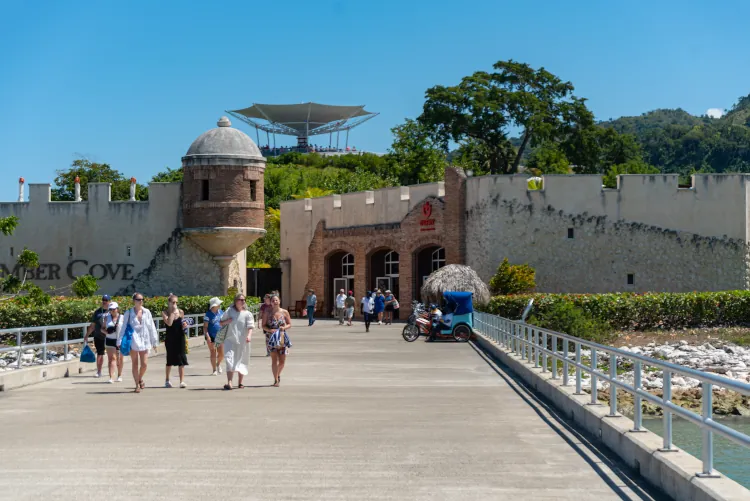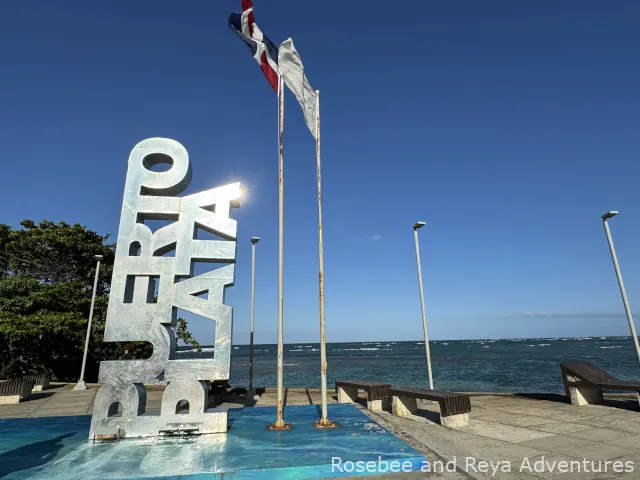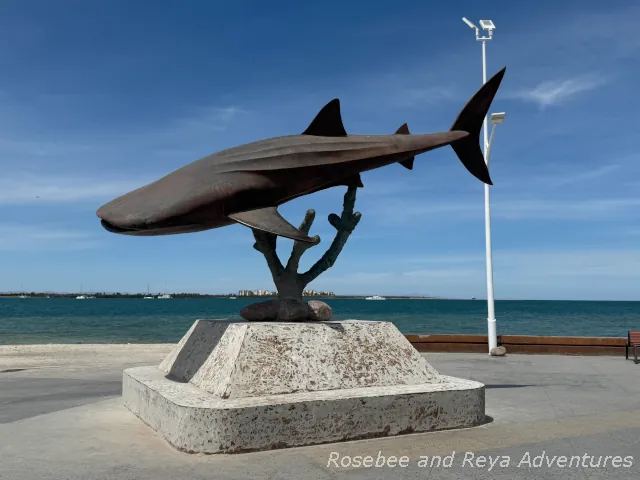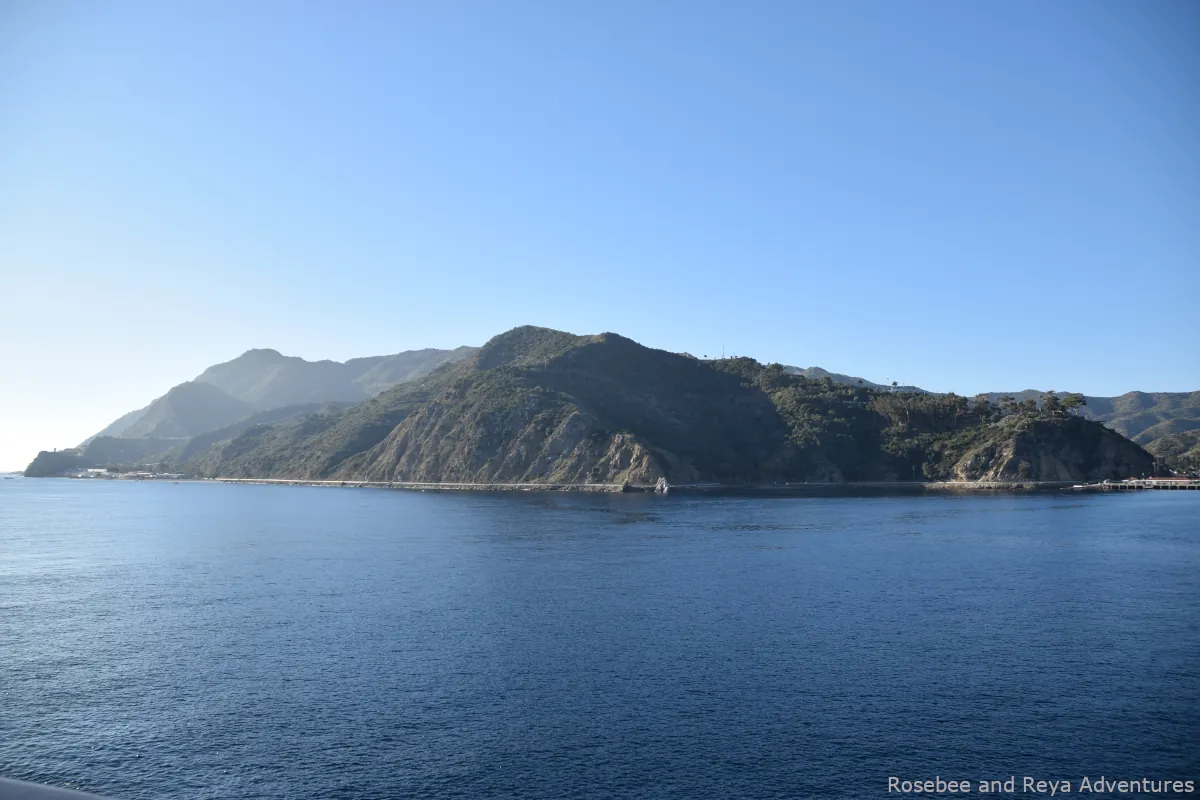Are you planning on going on a cruise through the Panama Canal? One of the best ways to experience the Panama Canal is to do a full-transit Panama Canal cruise. For many, cruising through the Panama Canal in Central America is on their travel bucket list; it was on mine. It is incredible to watch a ship’s progress through the three sets of locks and learn about the significance and history of the Panama Canal. Cruising from the West Coast of the United States to ports in Florida, Galveston, New Orleans, or vice-versa, is truly an amazing experience.
Keep reading to learn about cruising through the Panama Canal, popular ports on Panama cruise itineraries, and everything you need to know about preparing to cruise through the Panama Canal.
Cruise Lines That Cruise Through the Panama Canal
Cruises through the Panama Canal are typically repositioning cruises offered by several cruise lines. Major cruise lines offering full transit cruises include Carnival Cruise Line, Royal Caribbean, Holland America Line, Princess Cruises, and Norwegian Cruise Lines. Most full transit Panama Canal cruises occur during the springtime, around April, and again in the fall during October.
Repositioning of the cruise ships corresponds to cruise lines moving ships for the Alaska cruise season during the summer. During springtime, cruise lines move ships from ports like Tampa, Miami, and Fort Lauderdale to the U.S. and Canada’s West Coast. In the fall, the ships return to ports like Miami and Tampa from West Coast Ports like Seattle, Los Angeles, San Francisco, San Diego, and Vancouver, Canada. When we went on our Panama Canal cruise, we sailed from Port Tampa Bay to Los Angeles.
Cruising the Panama Canal
Going on a cruise through the Panama Canal is a fantastic experience. Depending on the size of the cruise ship you are on, you will go through three or two sets of locks in the Panama Canal. You will cruise through the Chagres River, surrounded by several rainforests in Panama. Along the way, you may even see crocodiles basking in the sun, on the shore, or swimming along the canal. You will also sail under three iconic bridges along the canal: the Atlantic Bridge, Centennial Bridge, and the Bridge of the Americas.

Cruising Through the Old Locks of the Panama Canal
For many, the dream is to travel through the original locks of the Panama Canal. There are three sets of original locks along the Panama Canal. The three lock sets are the Gatun Locks, Pedro Miguel Locks, and the Miraflores Locks. Cruise ships within the maximum size of the Original Locks are called Panamax Ships.
Most people hope to cruise through the Original Locks. If you want to cruise through the original locks, you will want to take note of the cruise ship and the size of the ship you choose to sail on. Typically, the older, smaller ships of the various cruise lines will travel through the old locks, but that is not a guarantee. We sailed on Royal Caribbean’s Radiance of the Seas through the old locks. Our cruise ship, Radiance of the Seas, which is part of Royal Caribbean’s Radiance Class, fits with about two to three inches of extra space on each side of the ship in the locks. Some cruise lines will note the locks you will cruise through, but not all will.
Cruising Through the New Locks of the Panama Canal
If you are cruising on a newer cruise ship that surpasses the maximum specifications for the original locks, you will travel through the new locks of the Panama Canal. The expansion of the Panama Canal with the new locks was completed in 2016. The New Locks are the Agua Clara Locks on the Atlantic side and the Cocolí Locks on the Pacific side. Cruise ships within the maximum size of the New Locks are called Neo-Panamax Ships.
Significance of Cruising Through the Panama Canal
Before the Panama Canal, ships had to go around the tip of South America to reach the Pacific Ocean. Sailing around the tip, known as Cape Horn, can be treacherous for ships. The Panama Canal’s creation drastically reduced the time it would take ships to get from the Atlantic Ocean to the Pacific Ocean. The Panama Canal is a vital shipping and transportation route for ships, with thousands of ships transiting the canal a year. During your transit, you will see different ships going through the locks or waiting for their turn through the locks.
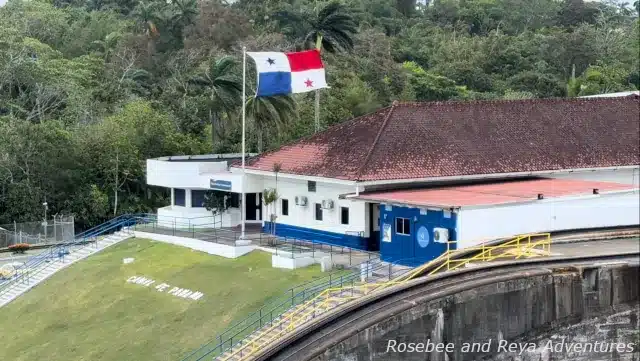
Construction of the Panama Canal
The Panama Canal was completed in 1914 after ten years of construction and is about 50 miles (80 kilometers) long. Construction of the canal included creating one of the largest man-made artificial lakes, the Gatun Lake, and the three sets of locks. The Gatun Lake is especially important for the canal as it holds the water needed to move ships through the locks. Water in Gatun Lake allows ships to make their way through the canal without a constant water flow. When there is a drought affecting the water level in the lake, a limited number of ships are allowed through the Gatun, Pedro Miguel, and Miraflores Locks per day.
The portion of the canal from Gatun Lake to Miraflores Lake has to be maintained so that ships can continue to transit through the canal. This is especially true at the Gaillard Cut, the Culebra Cut, and in Gamboa to the Pedro Miguel Locks. The Gaillard Cut is the shallowest section of the canal, with an average depth of around 43 feet (13 meters). As you cruise through this area, you will see machines used for dredging the canal. Throughout the year, portions of the Gaillard Cut will be dredged to maintain the depth of the canal so ships can cross.
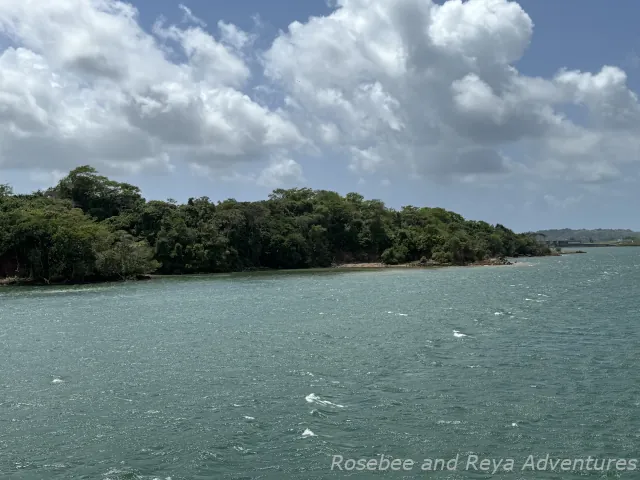
Engineering Marvel of the Panama Canal
The original locks of the Panama Canal, Gatun, Pedro Miguel, and Miraflores Locks, utilize gravity to raise and lower ships through the canal. Gatun Lake is above sea level, so the locks are used to bring ships up to Gatun Lake as they enter the canal. As ships prepare to exit the canal, the locks lower ships back down to sea level. The use of gravity in the old locks is how the locks fill with water to raise ships above sea level and vice-versa. Water from rainfall in Panama feeds into rivers, ultimately flowing into Gatun Lake and Miraflores Lake. A con to using gravity in moving the ships through the locks is the amount of water loss that occurs during the process.
Engineering of the Old Locks
Coming from the Atlantic side, the first locks you go through are the Gatun Locks. The Gatun Locks have three chambers that ships work their way through, and they are gradually raised to 85 feet (25.9 meters) above sea level to enter Gatun Lake. After going through the Gatun Locks and entering Gatun Lake, ships continue towards the Pedro Miguel Locks. The Pedro Miguel locks have one chamber that will lower ships 31 feet (9.4 meters) into Miraflores Lake. After crossing Miraflores Lake, ships reach the Miraflores locks. The Miraflores Locks have two chambers that work to lower ships 54 feet (16.5 meters) to sea level.
The old locks allow for two-way ship traffic. It is likely you will be next to a ship going in the opposite direction while making your way through the locks. As one side of the lock is lowering a ship, the other side will raise a ship through the use of gravity to adjust water levels on each side.
The maximum specifications for ships to fit in the original locks are 294.43 meters in length, 32.31 meters for the beam (width of the ship), and 12.04 meters in draft (depth of the lowest point of the ship from the waterline). The maximum height for all cruise ships is 57.91 meters since the Bridge of the Americas has a height of 62.5 meters.
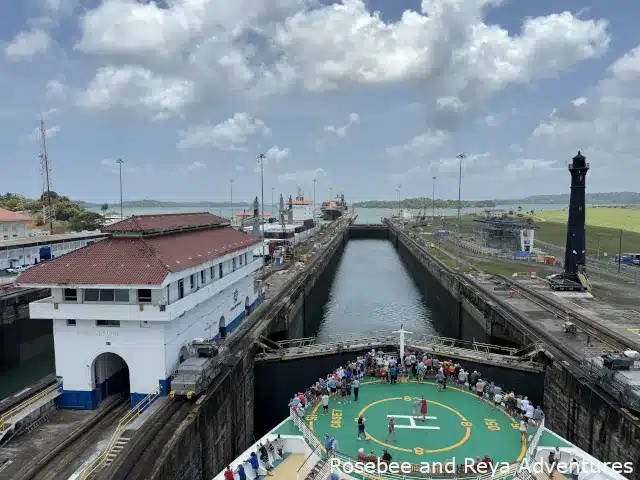


Engineering of the New Locks
Unlike the old locks that use gravity to adjust water levels, the new locks have reservoirs. The water reservoirs help raise and lower ships through the locks. The Agua Clara and Cocoli Locks each have three chambers to raise ships to the level of Gatun Lake and down to sea level. Since the new locks have a water reservoir system for raising and lowering ships, there is less water loss. Additionally, the new locks do not have two-way traffic like the old locks. Ships go in one direction, so coordination is essential for ships entering and exiting the canal.
Only ships classified as NeoPanamax will go through these two sets of locks instead of three like the Panamax ships. The maximum specifications for the new locks are 366.0 meters in length, 51.25 meters for the beam (width of the ship), and 15.2 meters in draft (depth of the lowest point of the ship from the waterline). Like Panamax ships, NeoPanamax ships cannot exceed 57.91 meters in height, so they can sail under the Bridge to the Americas.
Subscribe to our Travel Newsletter!
Receive our free Packing Guide with Bonus Cruise Essentials Checklist and Waikiki Travel Guide with Map when you subscribe.
Enjoy the Scenic Views and Wildlife Along the Canal
As you cruise through the canal, you will have many opportunities to take amazing pictures. The Panama Canal is surrounded by several forests, making it an excellent place for scenic pictures and videos. While cruising through the canal, you might get to see a crocodile. We saw two crocodiles during our cruise along the canal. One crocodile was sunning on the shore, and another went from the water onto a small sand area along the canal.
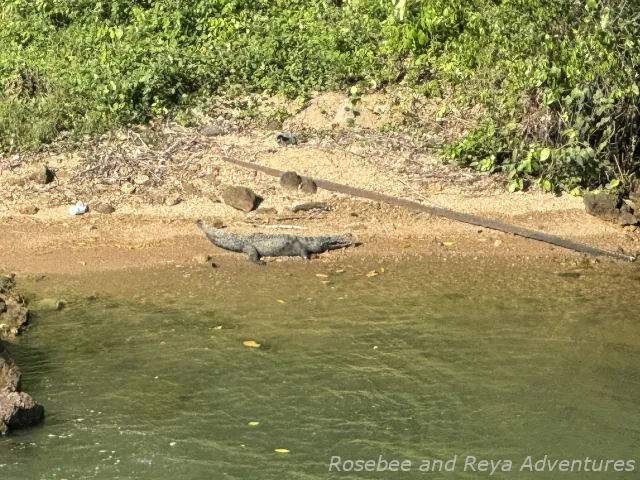

Variations of Panama Canal Cruises
When picking a Panama Canal cruise itinerary, it is important to know the type of Panama Canal cruise you want to do. The cruise lines offer variations of cruises to the Panama Canal. You will find full transit, partial transit, and cruises that stop at the Colon Cruise Port in Panama, where cruise passengers can do an excursion to see the locks of the Panama Canal.
Cruises that are partial transits or stop at the Port of Colon are usually closed-loop cruises. Meaning they will embark and disembark at the same departure port, but not go all the way through the canal. On the other hand, a full transit cruise starts and ends at different ports. It is important to note that not all cruise lines offer partial transit Panama Canal cruises.
Additionally, if you book a partial transit cruise during Panama’s dry season, you risk not going through the Gatun or Agua Clara Locks into Gatun Lake. The partial transit portion of your cruise could be canceled if there is concern regarding the water level of the Panama Canal due to drought conditions.
Ports of Call on Panama Canal Cruises
You will stop at many ports during a Panama Canal cruise. The ports your ship visits will depend on the itinerary you choose. Some cruise lines have simple Panama Canal cruise itineraries. They are usually about 14 to 16 days long. However, cruise lines have more elaborate itineraries with cruises that are 26 to 31 days long.
Departure Ports for Panama Canal Cruises
Full-transit Panama Canal cruises can depart from several ports. Panama Canal cruises doing a full transit will start and end in different ports. Typically, you will go from ports in Southern states and the East Coast to ports on the West Coast of the United States or Canada and vice versa.
We decided to fly to Tampa, as we chose a Royal Caribbean cruise that left from Port Tampa Bay. Our cruise ended in Los Angeles, California. However, the cruise ship had an additional itinerary from Los Angeles to Vancouver, Canada. The cruise ship then started its Alaska season, cruising from Vancouver, Canada, to Alaska. We could have chosen the extended itinerary and sailed for 27 days. We opted to sail for only 14 days.
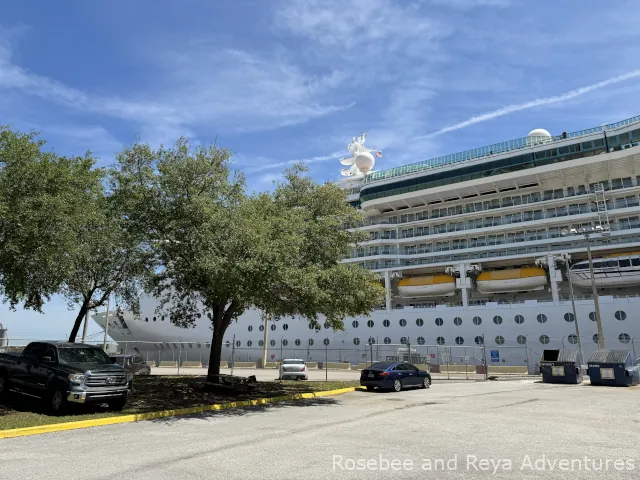
East Coast Departure Ports
The main port of departure on the East Coast is New York. Southern state departure ports include Galveston, Texas; New Orleans, Louisiana; Mobile, Alabama; and four cities in Florida. The Florida ports are Port Tampa Bay, Port Canaveral, Fort Lauderdale, and Miami Cruise Port.
West Coast Departure Ports
The main ports of departure on the West Coast of the United States are Seattle, Washington, and three ports in California: San Francisco, Los Angeles, and San Diego. Additionally, you could have a Panama Canal cruise leave from Vancouver, Canada. There is also a cruise line that offers Panama Canal cruises that depart from Panama City, Panama.
Common Ports of Call on a Full Transit Panama Canal Cruise
You will stop at several Caribbean and Latin American ports during your Panama Canal cruise, but they will vary depending on the cruise line and their itinerary. Most itineraries include a stop at Port Oasis Ecopark Cruise Port in Cartagena, Colombia. Other common ports are Puerto Limon, Costa Rica, and Grand Cayman, which are on the Caribbean side of the country.
In addition to going through the Panama Canal, most cruise ships will stop at the Colon Cruise Port if they come from the Caribbean. If a cruise ship is coming from the Pacific, it might stop in Panama City before going through the canal. Some ships coming from the Pacific might skip Panama City (Fuerte Amador) and instead stop in Colon after transiting the canal. It is also possible to cruise through the canal without stopping in Panama.

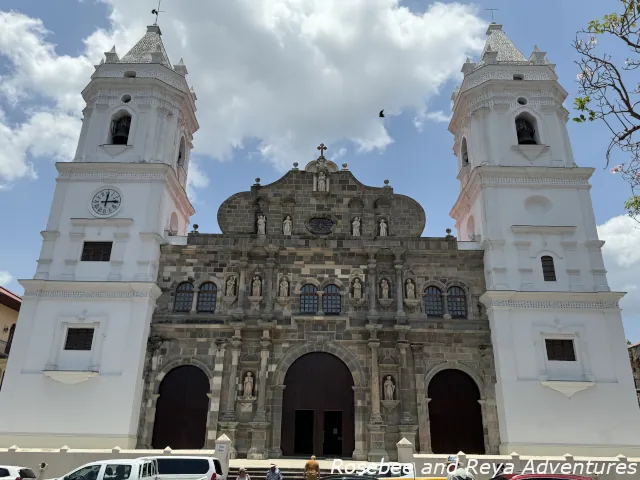
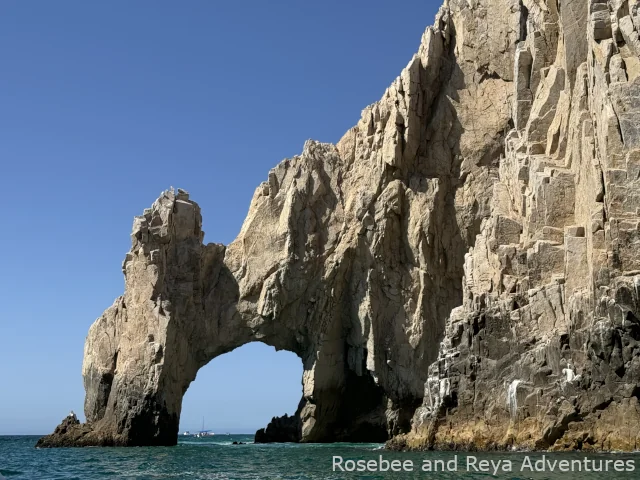
Port stops on the Pacific include Puntarenas, Costa Rica, Puerto Quetzal, Guatemala, and a handful of ports in Mexico. The popular cruise ports in Mexico for a Panama Canal itinerary include Puerto Vallarta, Mazatlan, and Cabo San Lucas. You may or may not stop at two cruise ports in Mexico.
These are just some of the most common ports you will likely find on many of the Panama Canal cruise itineraries. This does not mean you will stop at all of these. Each cruise line has its own variation of itineraries, and not all cruise lines stop at these ports. For example, Carnival Cruise Line does not usually stop in Puerto Quetzal, Guatemala, but Royal Caribbean does. Of course, that does not mean things will not change in the future.
Preparing for Your Panama Canal Cruise
When preparing for a full transit Panama Canal cruise, there are several things to consider and prepare for prior to embarkation day. Here are some top tips to help you prepare for your full transit Panama Canal Cruise.
Have All Required Travel Documents
First, if you don’t have a passport, you will need one. It isn’t enough to have a passport card; a Passport book is required, so don’t leave home without your Passport book. You can only complete pre-board check-in for your cruise online if you have a passport. You must provide passport information, such as your passport number and expiration dates, when doing online pre-board check-in. If you need additional travel documents, give yourself enough time to gather them all.
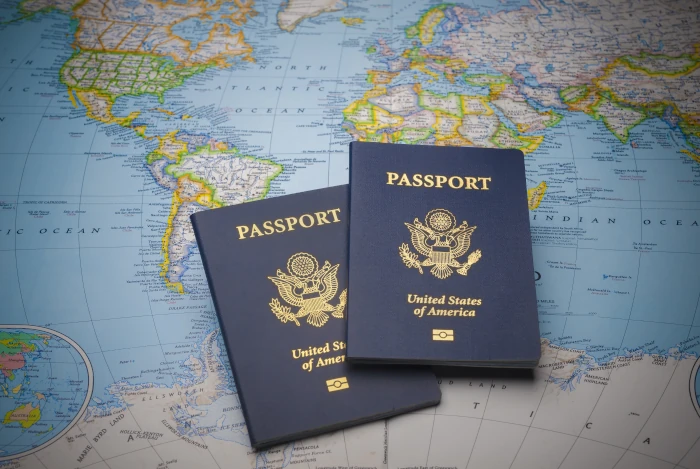
Get Travel Insurance
You should consider getting travel insurance for your trip. Typically, full transit Panama Canal cruises are at least 14 days long and can be upwards of 26 days, depending on the itinerary. Travel insurance is important when traveling in general. It is more important if something unexpected happens on a cruise ship or in a foreign country.
Have All the Medications You May Need
If you have prescription medications, check your supply a couple of weeks or so before leaving on your cruise. This way, if you need to order more medications, you can get them before leaving. You should plan to have enough medications for your cruise and for when you return home, so you don’t need to worry about your supply when you get home.
Things to Pack for Your Cruise
Packing for a Panama Canal cruise is similar to packing for any other cruise. However, I recommend having extra clothes because of the heat and how much you will sweat, especially if you cruise during the hot season. Light, breathable clothing will be best due to the heat. You will also want comfortable walking shoes to walk around in at port stops. If you want to avoid traveling with too many clothes, you can use the laundry services the cruise line offers.
I also recommend packing a sweater or jacket. The sweater or jacket will be helpful when you are in the Pacific Ocean, mainly when off the coast of Mexico. People who usually cruise the Caribbean and are used to the warm air during the evening and at night are surprised by how cold it can get off the coast of Mexico in the evening.
More Packing Tips
For more helpful packing tips, read our blog post Essential Packing List for Your Cruise Vacation. We have been cruising for several years and have gotten our packing down to a science. We have also learned that there are several items that are extremely helpful and help make our cabin more comfortable. Read our blog post about 27 Essential Cruise Cabin Items for Maximum Comfort. You don’t have to consider all the items, but some are game-changers for comfort levels.
Be Prepared for Hot, Humid Weather
Since some ports you will visit are closer to the equator, you will want to bring sunblock, a hat, sunglasses, a reusable water bottle, and aloe vera. Do not underestimate the intensity of the heat and sun around Central and South America. Several passengers on our ship suffered from heat-related illnesses when we stopped in Cartagena, Colombia, and had to seek medical care.
We were constantly applying sunblock to try to prevent sunburns and always had a hat when we got off the ship at the different port stops. We also traveled with reusable insulated water bottles, so we always had some water on us in port. In Cartagena and Panama City, we bought delicious cold drinks. The drinks were absolutely refreshing and necessary because of the heat. As a precaution, I typically travel with aloe vera for sunburns, which did come in handy.
Onboard Experience During a Panama Canal Cruise
Since many full transit cruises are at least two weeks long, the cruise lines will have many activities on board. Overall, the onboard experience on a Panama Canal cruise is similar to other cruises, other than the length of time. However, if you enjoy spending time in the casino on cruise ships, you will find that the casino is closed while the ship is transiting through the Panama Canal. The casino is only open when cruise ships are in international waters.
The cruise lines will have activities available for kids and adults. Some main activities are trivia games on various topics, from general knowledge to pop culture. There will also be games on the pool and sports decks, and scavenger hunts. The trivia games and scavenger hunts are my favorite, especially music and Harry Potter trivia. And we got our first-ever cruise game win on one of the scavenger hunts on our Panama Canal cruise. Of course, it took us 29 years to finally win!
In addition to the usual entertainment offerings by the cruise lines, you will likely find some informative presentations. On our Panama Canal cruise, there were special presentations on the history of the ports we stopped at and a presentation on the Panama Canal. A guest speaker also had several speaking engagements during our cruise.
Frequently Asked Questions About Cruising the Panama Canal
As with many cruises, people have many questions about cruises to the Panama Canal. Here are some answers to some Frequently Asked Questions about going on a full-transit Panama Canal cruise.
The best time to do a full transit Panama Canal cruise is from December through April. December through April is considered the dry season for most ports of call visited during a full transit cruise. During this time, you will also avoid the hurricane season in the Caribbean and Gulf of Mexico.
The dry season will have less rain and great weather for outdoor activities. You can expect temperatures around the 80 to 90 degrees (Fahrenheit). However, the temperature can sometimes seem higher if the humidity is high.
Yes, you are required to have a passport book to do a full transit cruise through the Panama Canal. Cruises that start and end at different departing ports require a passport. Additionally, Panama requires cruise ship passengers to have a passport for all cruises that stop in the country.
If you have a passport card, like we do, the passport card will not be accepted by the cruise lines to check in and depart on the cruise. However, you can use the passport card as an additional form of identification.
Yes, a Panama Canal cruise is one of the more expensive cruises to go on, but it does not have to be. A Panama Canal cruise can easily cost around $1,500 to over $3,000 per person, not including taxes and port fees. However, when we purchased our cruise fare, we paid $730, not including taxes and port fees, each for an interior room.
To us, that was a bargain, considering when I looked into the cost, I saw interior rooms going for over $1,500 per person. When we purchased our cruise fare, it was just over three months before we would sail. Around three months before your sail date is when you are likely to see a reduction in the cost of a Panama Canal cruise. Of course, there is no guarantee you will see a price reduction like we did. It is a good idea to remember the three-month rule for any cruise.
It usually takes a cruise ship 8 to 10 hours to transit through the Panama Canal. However, if there are any delays, it can take about 12 hours to transit the canal. Our ship was originally supposed to begin making its way through the Gatun Locks around 6 a.m., but there was a delay. We started going through the Gatun Locks around noon. Our ship made its way out of the Miraflores Lock near Panama City after 10 p.m. Transit day through the Panama Canal is a long day.
The best place to watch the cruise ship go through the locks of the Panama Canal is at the front of the ship. Most, if not all, cruise ships will allow passengers access to the front of the ship, which people do not usually have access to. This is typically the heliport area if your ship has a heliport.
The day before your crossing, an announcement will be made about when access to this section will be allowed. On our Royal Caribbean cruise through the canal, an announcement was made the day before saying access would be allowed before 6 a.m.
Since it is a very long day and usually hot going through the Panama Canal, the ship will more than likely show the crossing on their television feed. So, if you do not want to stand outside in the heat, you can watch from the comfort of your room. The live feed of the crossing will likely have live commentary, especially when going through the locks. This can vary based on your cruise line.
There are a variety of excursions you can do on a Panama Canal cruise. Excursions can vary between the cruise lines, but overall, they are somewhat similar. Usually, on a full transit, you may have a port day in Colon or Panama City. This allows cruise passengers to experience Panama. You can learn about the canal’s history at the Miraflores or Agua Clara Locks visitor’s center. Additionally, you can choose to experience Panamanian culture from its beautiful nature, food, historical city tours, or visit an indigenous village.
At each port you visit, a range of excursions will be available through the cruise lines. The excursion will range from cultural experiences to city tours and some adventurous tours like ziplining or kayaking. You should read excursion descriptions as some excursions are not accessible or have higher activity levels.
No, you do not need to book a room with a balcony. We were in an interior room during our cruise through the Panama Canal. However, there are perks to having a balcony room during a Panama crossing. The best perk is that you do not need to stand outside with the crowds when going through the locks. It can get very crowded when the ship goes through the locks.
No, you do not have to do a full transit Panama Canal Cruise to experience the Panama Canal. Most Panama Canal cruises are about two weeks long. However, there are cruise options, such as a partial transit or a cruise stop at the port of Colon. A partial transit cruise or a cruise with a stop in Colon usually takes fewer days than a full transit crossing.
A partial transit allows people to go through the Gatun Locks or the Agua Clara Locks on the Caribbean side. During a partial transit cruise, you will go through the locks into Gatun Lake, turn around, and exit the locks you entered later in the day.
A stop at the Colon cruise port allows people to go on excursions to experience Panama and visit a set of locks like the Miraflores or Agua Clara Locks.
Is a Full Transit Panama Canal Cruise Worth It?
Absolutely! Cruising the Panama Canal was an amazing experience. Watching our ship make its way through the locks and see other ships, like cargo ships, up close as they went in the opposite direction was cool. I have wanted to go on a Panama Canal cruise for over 15 years. So, going on my dream cruise was a dream come true. We also received a certificate for going through the canal. I plan to go on another Panama Canal cruise. Next time, I plan on leaving from Los Angeles and will choose an itinerary longer than 14 days. If you enjoy cruising and are considering going on a Panama Canal cruise, do it! I highly recommend experiencing a cruise through the Panama Canal.
Popular & Related Posts
- The Ultimate Guide to Panama Canal Cruise Itineraries
- 39 Tips, Tricks, & Hacks to Save Money on a Cruise
- Colon Cruise Port in Panama, The Ultimate Guide
- Port Oasis Ecopark, A Cartagena Colombia Cruise Port Guide
- Visiting the Amber Cove Cruise Port in the Dominican Republic
- Taino Bay Cruise Port, A Guide to the Puerto Plata Cruise Port
- 24 Best Things to Do in Puerto Plata for an Epic Getaway
- 11 Best Shore Excursions in Puerto Plata for Cruise Ship Visitors
- 27 Waterfalls of Damajagua Tour, Everything You Need to Know
- Grand Turk Cruise Center, The Ultimate Cruise Stop Guide
- Half Moon Cay Cruise Port, A Guide to Carnival’s Private Island
- St. Lucia Cruise Port and Shore Excursion Guide
- Sailing on the Carnival Celebration Cruise Ship
- 45 Best Things to Do in Curacao on Your Caribbean Getaway
- Ensenada Mexico Cruise Port, The Ultimate Cruise Stop Guide
- The La Paz Mexico Cruise Port, Everything You Need to Know
- Exploring Old San Juan, Puerto Rico: A Visitor’s Guide

